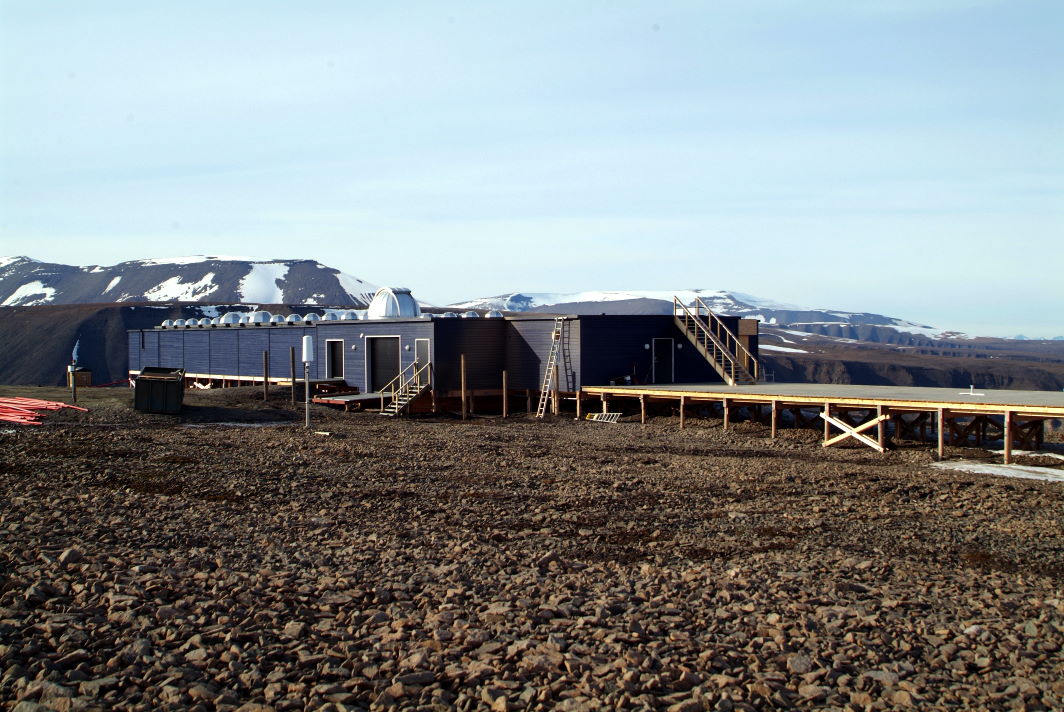
KHO viewed towards South-West on August 27th, 2008.
Practical information about the observatory
The Kjell Henriksen Observatory (KHO) in Svalbard is an optical observatory located at the archipelago Svalbard
1000 km north of mainland Norway (78
o N 16
o E). Here more than 30 optical instruments as
well as other non-optical instruments, are employed for research on the middle- and upper atmosphere.
On this page we give some practical information about the observatory.
|
|
|
Coordinates
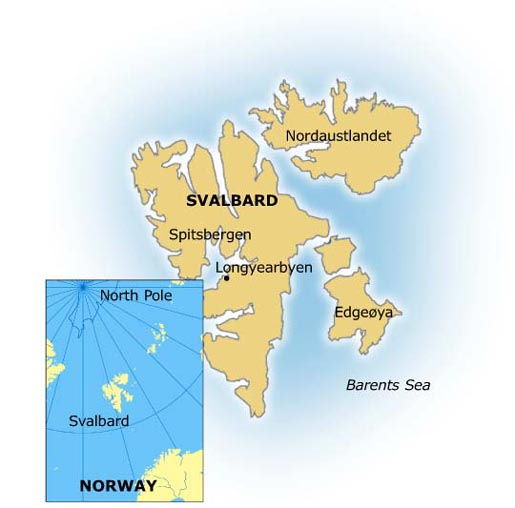
|
OBSERVATORY POSITION:
78o 8' 52.8'' N, 16o 2' 34.8'' E
GEO: 78.148 N, 16.043 E
ALTITUDE: 520 m
MAP DATUM: WGS84
|
How to get there
| The only reasonable way of accessing Svalbard is by airplane. The airline company SAS has regular
flights from Tromsø, and in the tourist season also direct flights from Oslo, to Longyearbyen.
The observatory itself is located at Breinosa, about 15 km from the centre of the town Longyearbyen.
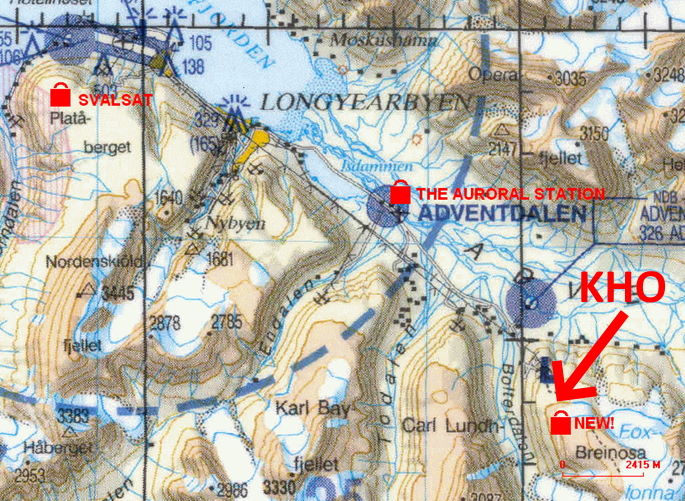
Map of Adventdalen with KHO location
The most flexible way to go there is by renting a car. Alternatively, take a taxi (~250 NOK one way).
Occasionally, it might be possible to get a lift with the observatory managers when they go out to
perform the daily routines. For most parts of the year, the last part of the road is snow covered,
so transportation with belt wagons is necessary. This must be arranged with the observatory managers.
Sending/shipping equipment
Equipment should be sent well in advance to Svalbard because of the unstable postal and delivery services.
There are two airline companies and two shipping companies providing cargo services. Ships can reach Longyearbyen most of the year,
but because of varying ice conditions, cargo with ships should be sent in the period from approximately June through December.
The shipping address for equipment sent to Kjell Henriksen Observatory is:
Kjell Henriksen Observatory
c/o Fred Sigernes
The University Centre in Svalbard
PO Box 156 UNIS (or street address: Vei 231-1)
N-9171 Longyearbyen
Norway
Facilities
The observatory has a good infrastructure/network. It has kitchen facilities so that visitors may cook their own food,
and a living section where it's possible to take a nap during a late campaign night. However, due to weather and
safety issues all scientists are required to have housing in Longyearbyen.
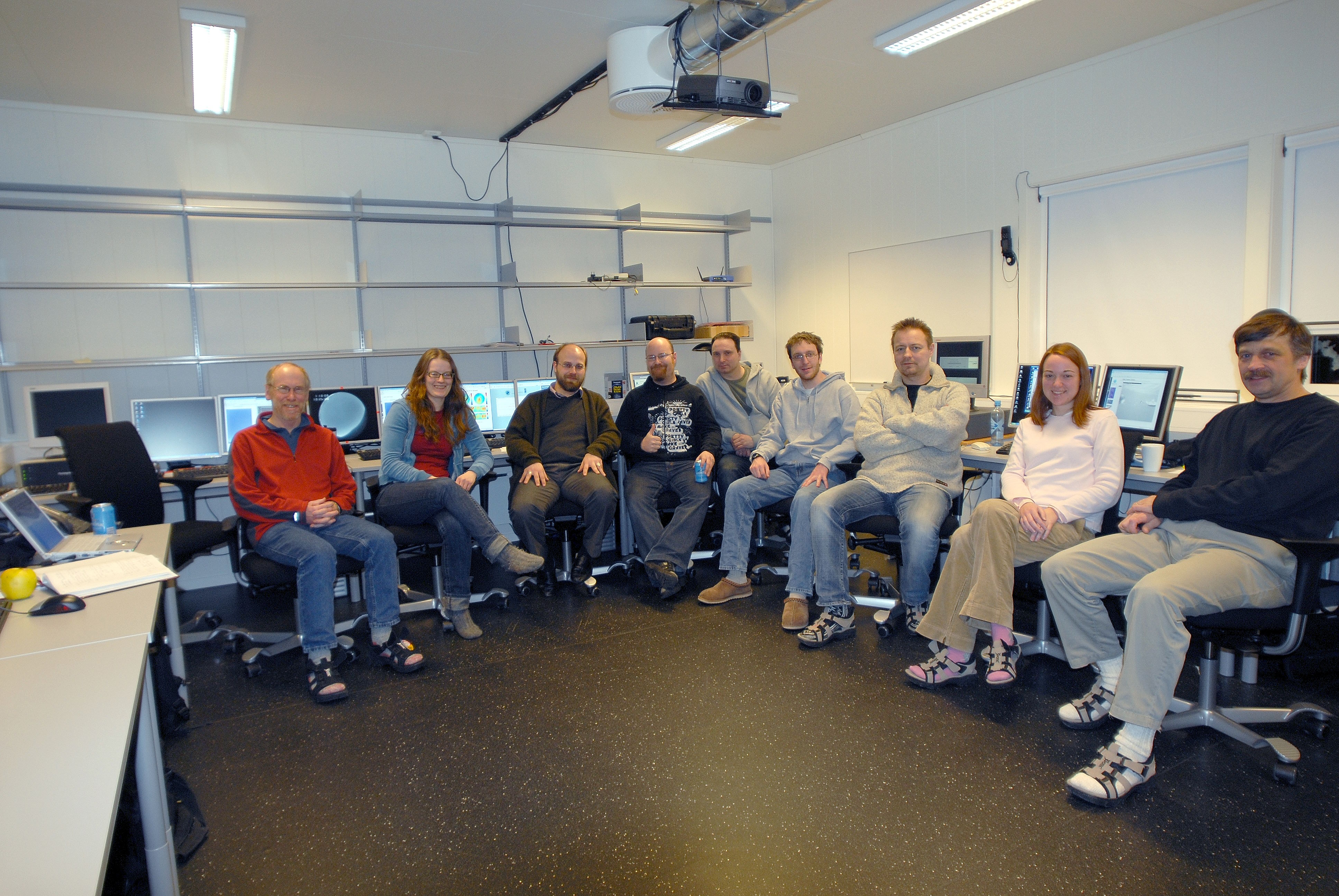
The operational room during the Scifer-2 rocket campaign January 18th, 2008.
The Svalbard team from left to right: Paul Kintner (1946-2010), Margit Dyrland, Magnar Johnsen, Jeff Holmes, Dag Lorentzen, Erik Lundberg, Fred Sigernes, Megan Mella and Mark Lessard.
There are several hotels and guesthouses
in town, and it might also be possible to rent apartments from UNIS.
The observatory is also equipped with work benches and tools for instrument assembly and repairs. At the university centre in town (UNIS),
an excellent calibration lab is available for low light calibration.
Safety
Although Longyearbyen is a civilized place, its location in the high Arctic requires that some considerations should be made
before arriving and while here. For visiting scientists we offer a small safety introduction that includes learning how to handle
flare guns and rifles for polar bear protection. Svalbard has one of the largest concentrations of polar bears in the world,
and although they seldom wander around in the vicinity of Longyearbyen and the Kjell Henriksen Observatory, precautions need to be made.
Visitors should also be aware of some other safety procedures so contact the observatory crew before arriving.
To learn about the polar bears in Svalbard, have a look at this information folder.
Rental of instrument module(s)
The Kjell Henriksen Observatory (KHO) has a gross total area of approximately 700 square meters, which includes a service section of
approximately 200 square meters floor space. The instrument section contains 30 instrument rooms with domes.
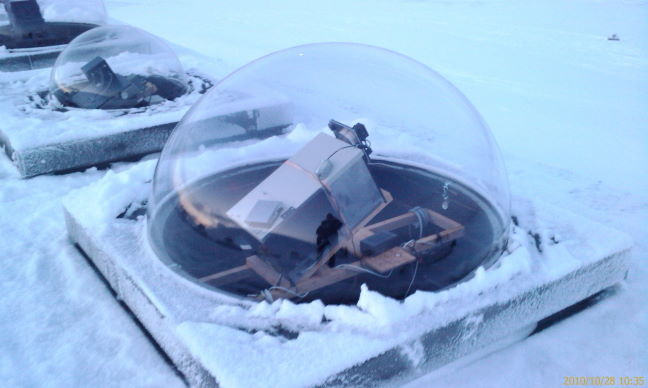
3 out of 30 domes. Here a Ebert-Fastie spectrograph and Michelson interferometer are mounted underneath to monitor the sky at 30 degree elevation towards North-Geomagnetic.
There are still domes available for rent on a yearly basis. Contact Professor Fred Sigernes if you have questions about renting one or more of those.
The domes have a diameter of 1m. In addition, high speed fiber network access and 220/110V power are included in the rent.
Click here for more information on each module.
|




